You are using an out of date browser. It may not display this or other websites correctly.
You should upgrade or use an alternative browser.
You should upgrade or use an alternative browser.
***Official Squad Thread***
- Thread starter Xcept1
- Start date
More options
Thread starter's posts
Alpha 9.12
30-Oct-2017
Hey Squaddies,
We've got some fresh layers for you, with no small thanks to community members Bill Nye and Nordic for their offerings direct from the Squad SDK. Read on for the rest of the fixes and changes.
- Added Yehorivka AAS INF v2, Yehorivka PAAS v1 and Narva AAS v3 by Bill Nye the Science Guy.
- Added Gorodok Vehicle Skirmish v1 by Nordic.
- Added Al Basrah PAAS v2.
- All invasion layers no longer allow flags being recapped by the defending team.
- Optimized performance on Yehorivka, Kohat, Chora, Fool's Road and OP First Light.
- Added new grass system on Fool's Road.
- Vehicle claims can now be approved by SLs even when they are incapacitated.
- Vehicle claiming is now a server config parameter "VehicleClaimingDisabled=false/true" and can be disabled on licensed servers too.
- Fixed admin access levels: all are working now independent (without kick rights).
- Tweaked prone player movement collision.
- Applied a fix to Nvidia PhysX fixing a client crash.
- Applied a fix to Nvidia PhyxX fixing freezes on Linux servers.
- Fixed certain sounds of nearby players not getting played.
- Updated the EAC plugin.
- Fixed a client crash on a possible timing issue on loading into a server that is changing maps.
- Fixed a rare client crash related to the compass.
- Fixed a crash preventing the recording of netprofiles.
- Fixed Kokan INS main base repair stations not working
- Removed all M1151 variants due to licensing issues and replaced them with MAT-V variants.
Join the Discussion >>
But wait! There's more!

DevBlog
The Road to Fallujah, Part 1
30-Oct-2017

Hi Squaddies,
During our Kickstarter campaign we held a vote to see which map from Project Reality you, the community, wanted us to remake for SQUAD. Fallujah clearly won that vote and was put on the roadmap. At that time, we were still learning a lot about the engine and how to efficiently tackle level construction in Unreal 4.
We started with barren desert maps like Kohat, then started adding more complexity seen in maps like Chora and Sumari. From there, we explored the Eastern European setting with large forests on maps like Fools Road, Gorodok, and Yehorivika.
Next, we pushed on to an urban setting on Narva, all the while knowing that Fallujah was one of the key maps that we were working towards. Upon the release of Narva, we began pre-production on Fallujah. At this stage we knew we wanted to take some extra time to brainstorm how we approach gameplay and visuals, because of this we decided to revisit our workflow and we really think it has paid off.

Getting Organized
The first thing we did was spend about a week reference digging. We wanted to gather tons of inspiration and sources to help us capture the essence of Fallujah.
In order to stay organized and to produce things in phases we broke the city up into four key recognizable districts: Outskirts, Industrial, Urban Residential and Urban Center, each contributing to the map in a unique way both in visuals and gameplay. Defining these districts allowed us to plan out the flow of the map and also breakdown the production of the assets into manageable phases.
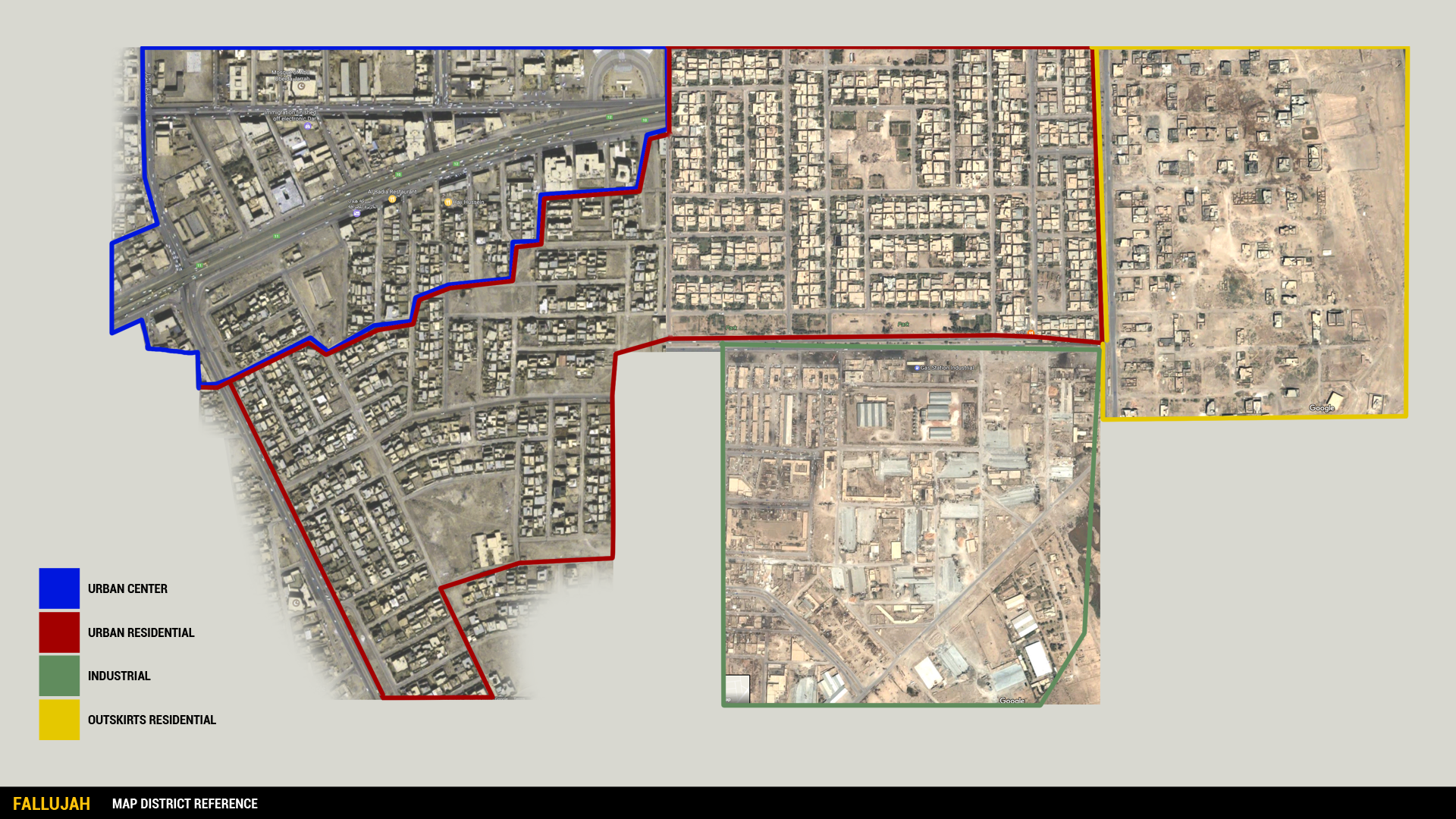

The Districts
Outskirts
The Outskirts consists of slight hills, sporadic homes in-construction, and other medium sized buildings creating well spaced areas for mechanized infantry to establish an approach into the city.
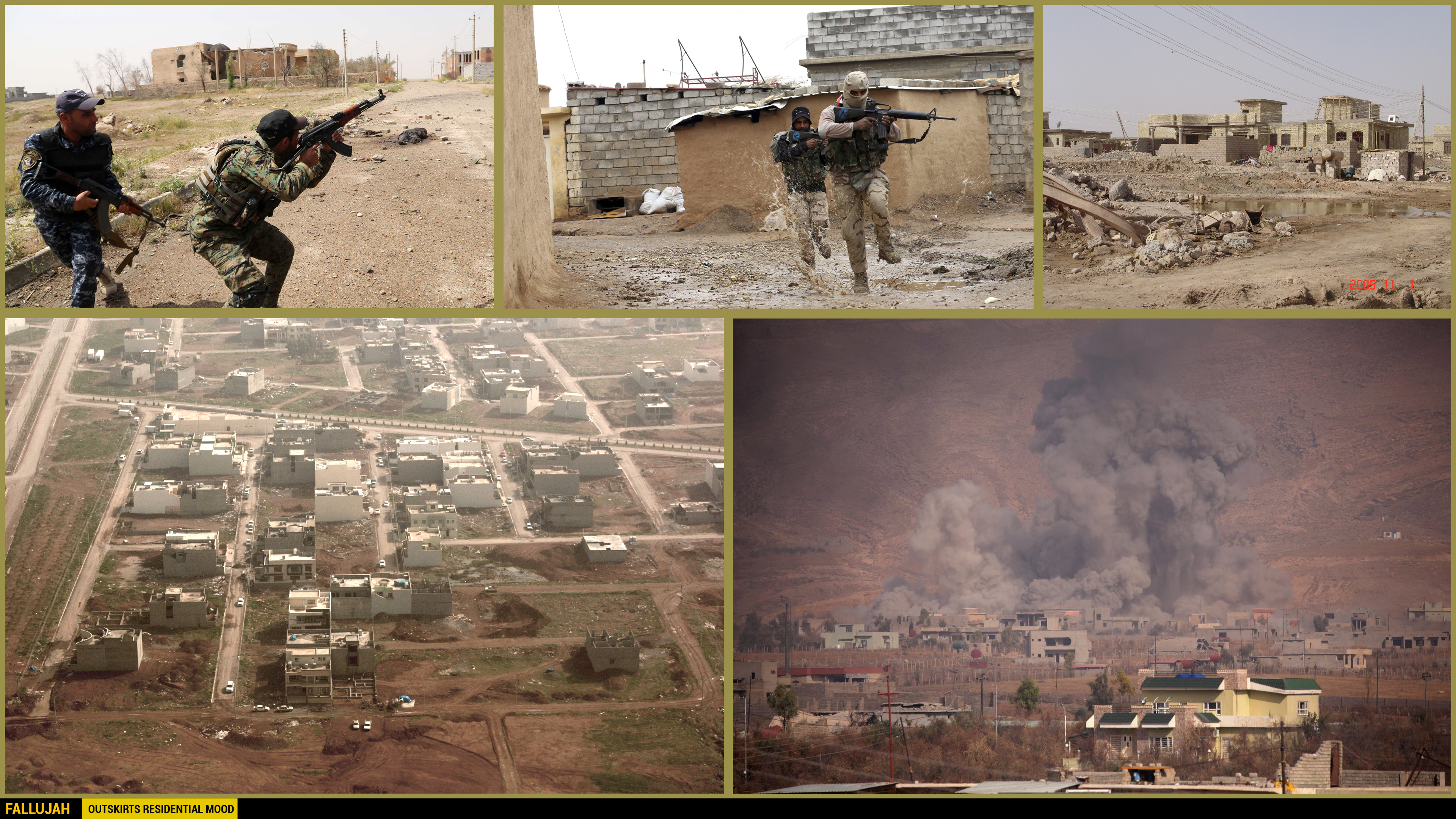
Industrial
This district is made up of large warehouses, office buildings and large in-construction buildings. Similar to the Outskirts, these areas will spaced out and provide prime locations for FOBs while offering vehicles cover, allowing them to push into parts of the city.
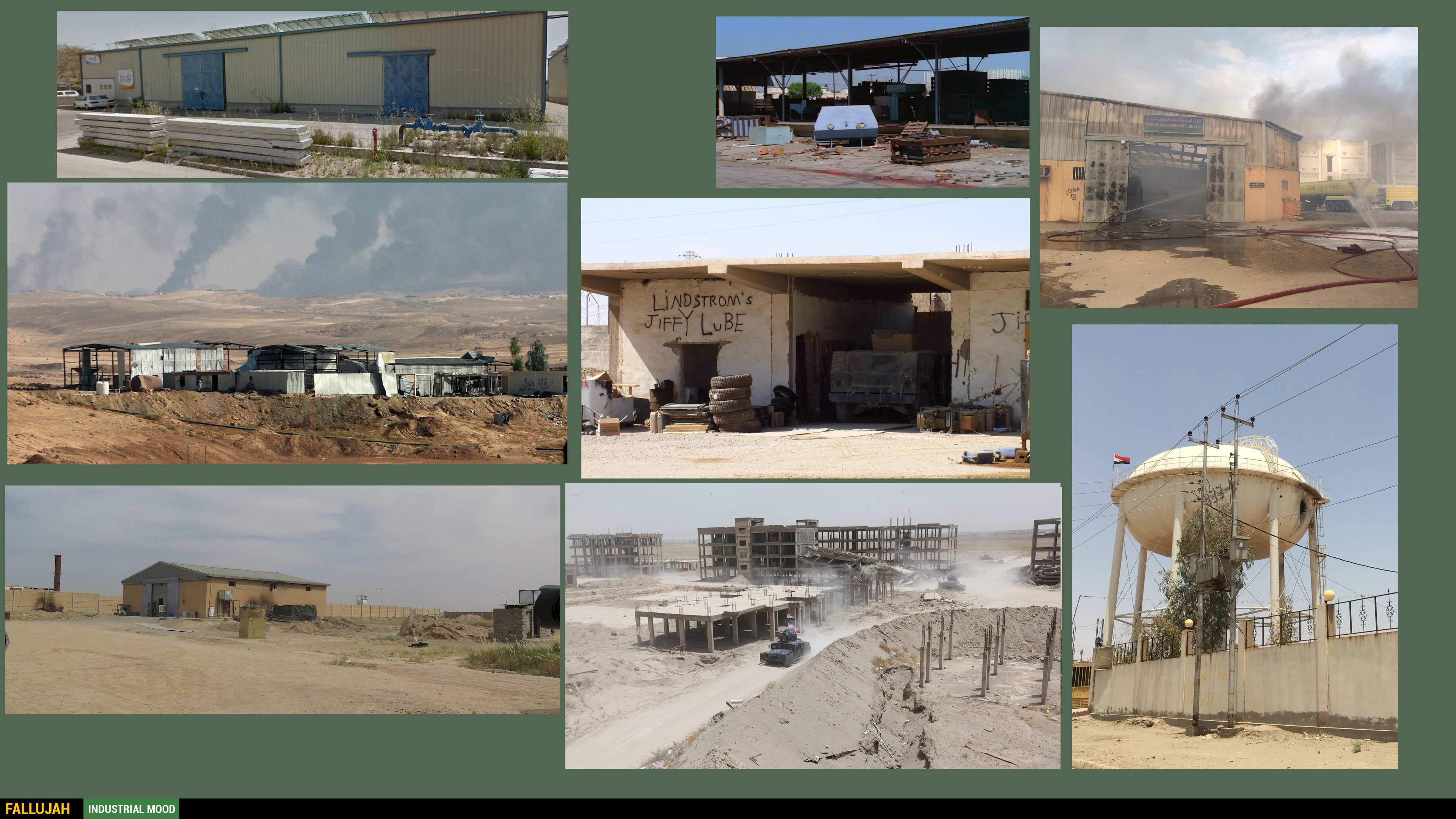
Urban Residential
Consisting mainly of homes, this district provides medium density with plenty of areas for infantry to take cover in. Taking vehicles into the Urban Residential areas will be a risky endeavor.
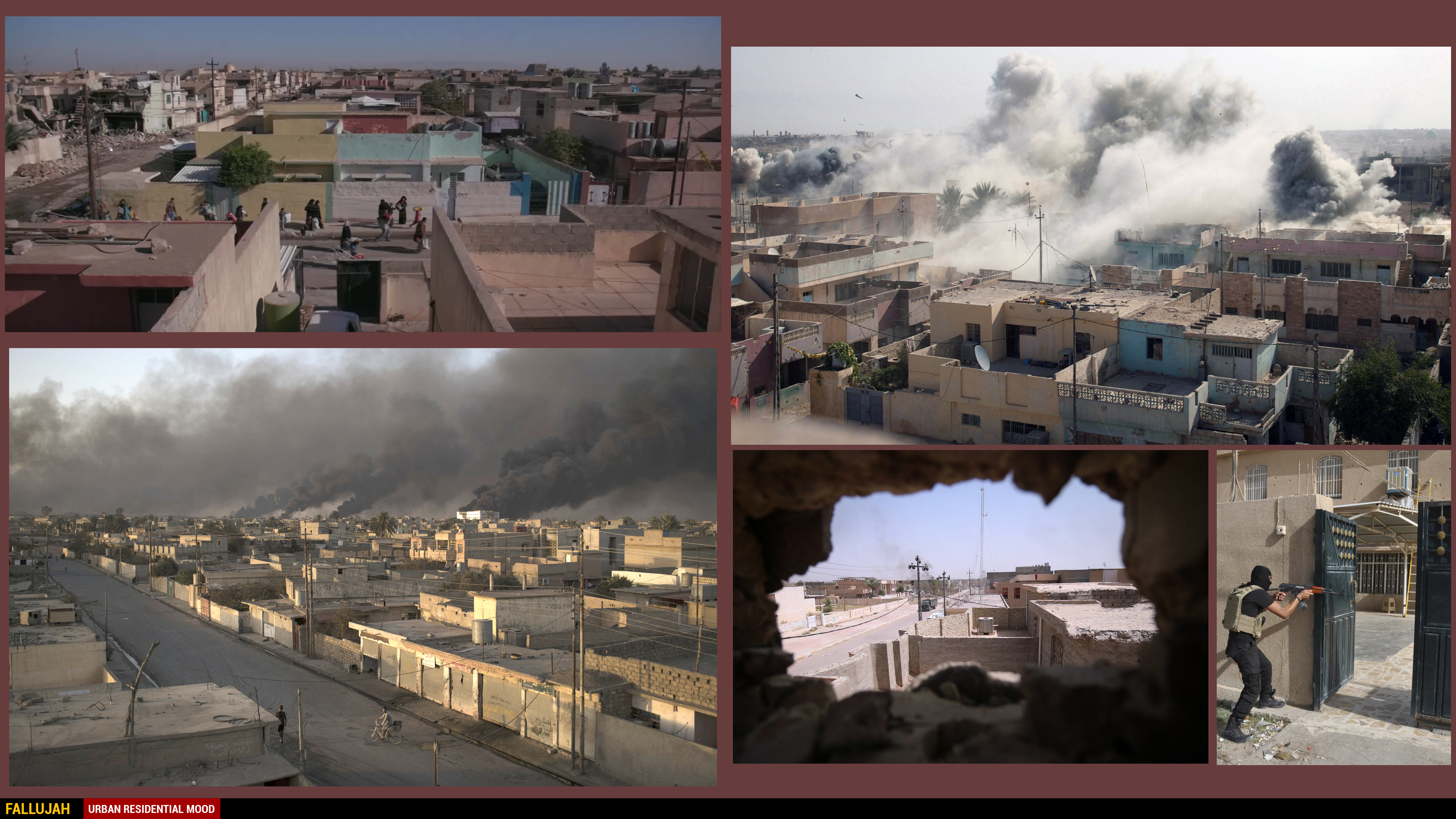
Urban Center
The Urban Center district is the heart of the city. Large roads, overpasses, big commercial buildings and high density will ensure intense combat.
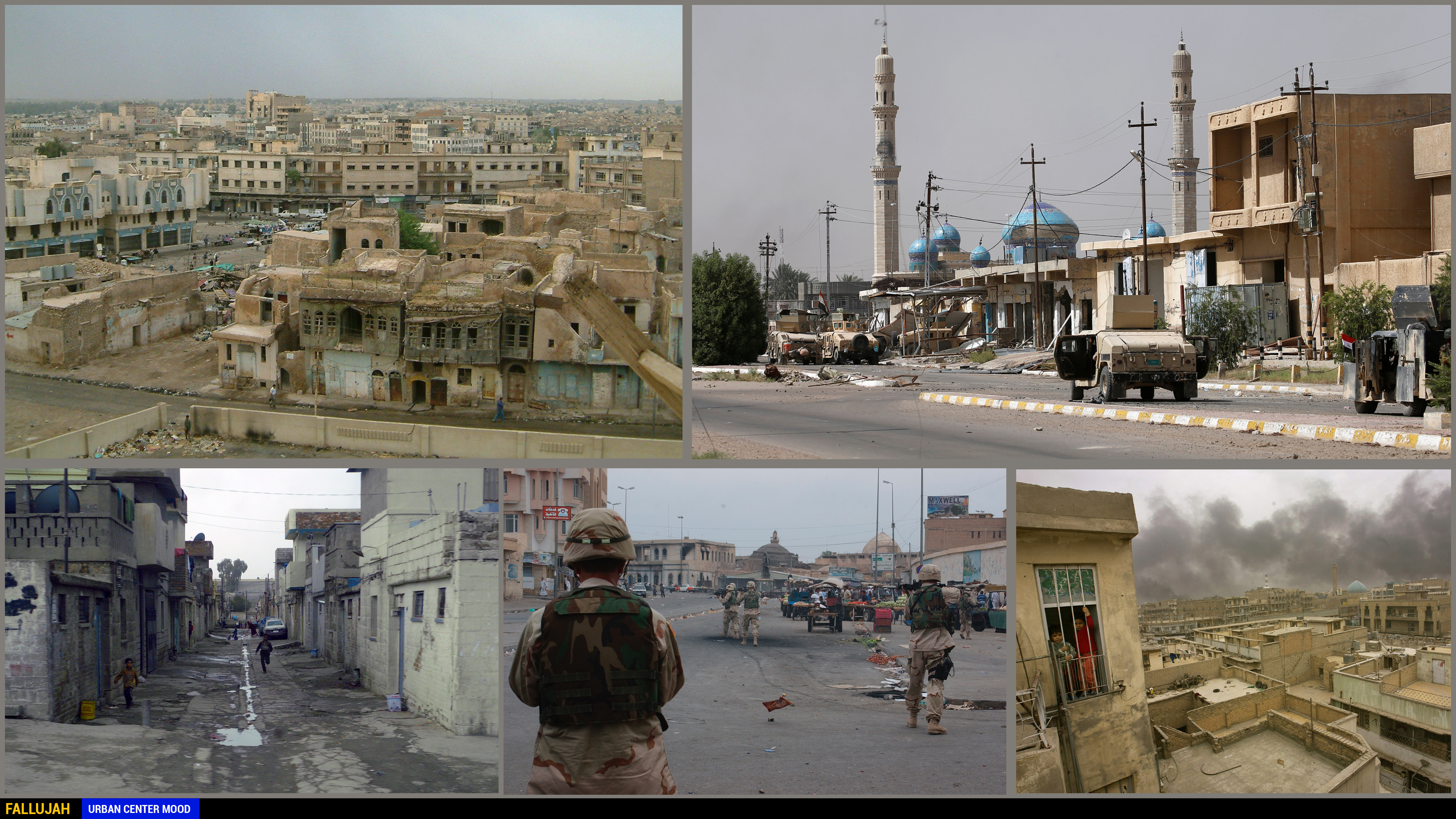
With the map broken down into key districts we were then able to start visualizing some potential map layouts. The original Fallujah West from Project Reality (PR) was examined and, in the end, we decided to use it as a starting point for the map.
The goal is to give a homage to the original map in the lower left while expanding upon it and making it our own. The PR map was based off of a real world layout, but breaking free from this gives us much more freedom in level design allowing us to prioritize gameplay over exact authenticity.
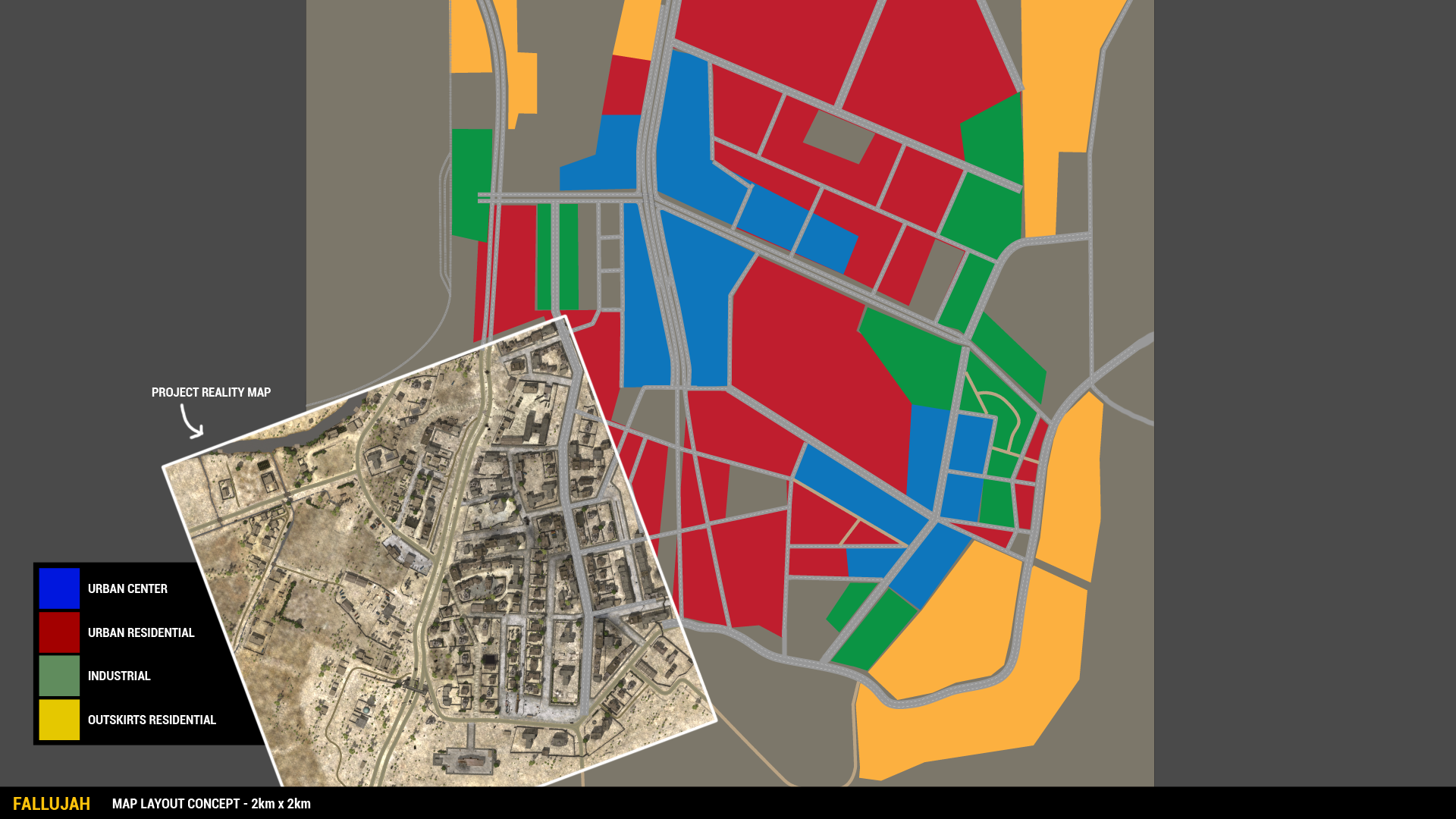

The First District
After getting organized we began producing the first district, Urban Residential. We chose to start on this district because we knew we wanted to revisit the way we produced buildings as they make up a large chunk of our map and wanted to address this first. We also knew the Urban Center district would be the most complicated and intricate set of buildings we would have to make so we decided to save those for last and start with Urban Residential.
In order to maximize the gameplay experience of our buildings we made rough blockouts of our buildings based on references. After we blocked out 15-20 buildings we threw together a test map and playtested them. During this stage we weren't concerned about textures or materials, we focused on spacing and variety of gameplay for this district.
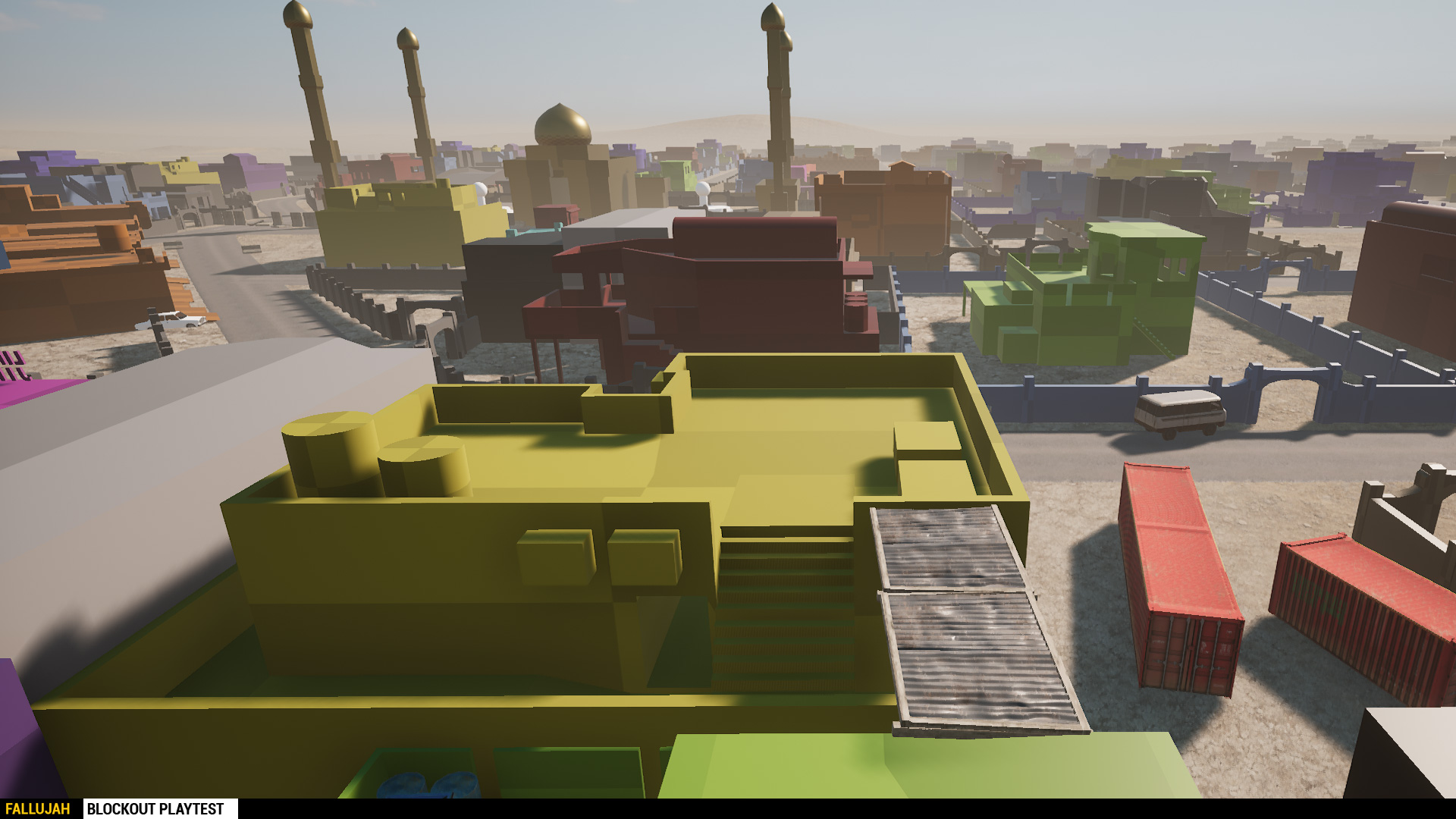
After a few adjustments we were happy with the blockouts. The team then took them through phases to get the buildings to a final state while creating other assets for the district. The end goal was to make a "vertical slice," a section of the district that represents the target visual style and quality for the rest of those areas of the map.
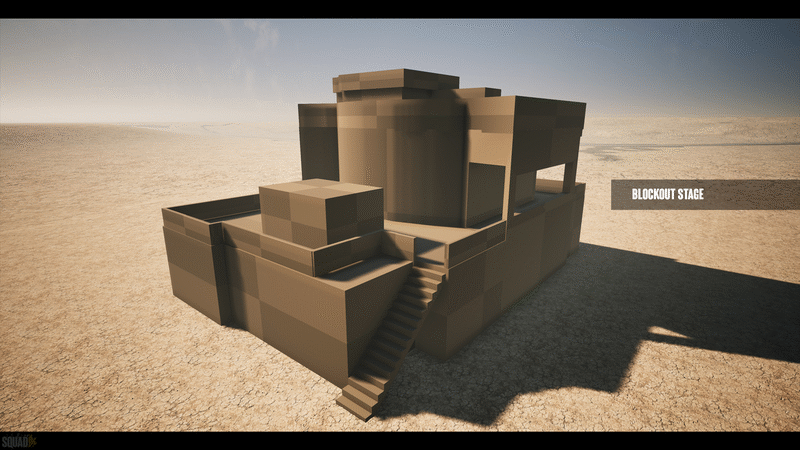


Burnt Car Material
Vehicle wrecks are an asset which add a lot of character and drama to a scene - and we wanted to do them justice. However, creating vehicles is always time consuming and can be costly in terms of memory footprint. With this in mind, we decided to reuse our existing vehicle models and repurpose an existing shader to "wreck" them.
Using this smart material, we can procedurally blend between various states of damage, such as burnt paint and ash. The technique also allows the artist to edit each vehicle in real-time without the need for time consuming asset reauthoring. Both the method and texture set is not unique to any single asset and so can be reused many times - making it inexpensive, versatile and time efficient.


Vertical Slice
Once the buildings were in a good spot we then arranged them into a scene and started adding other assets. Wall sets, rubble, destruction, building props, terrain materials and a host of other items were worked on to bring the scene together. Taking the time for R&D and to rehash our pipeline has really paid off and has set us up to move through the other districts at a good pace.
The level of detail in our vertical slice is our ambitious goal for key objectives of the map but for performance reasons may not get fully realized, but as they say, "Shoot for the moon, even if you miss you'll land among the stars."

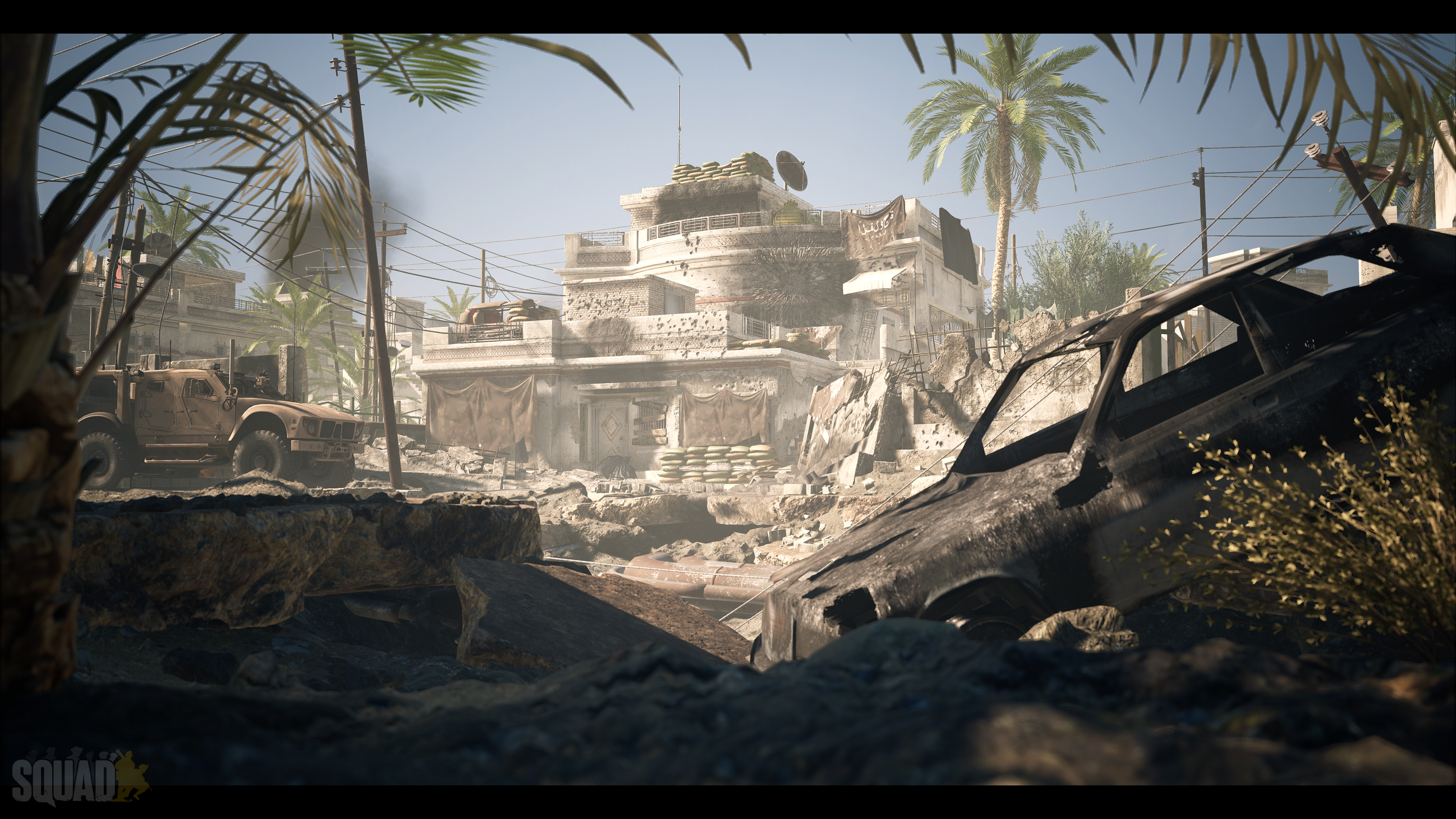
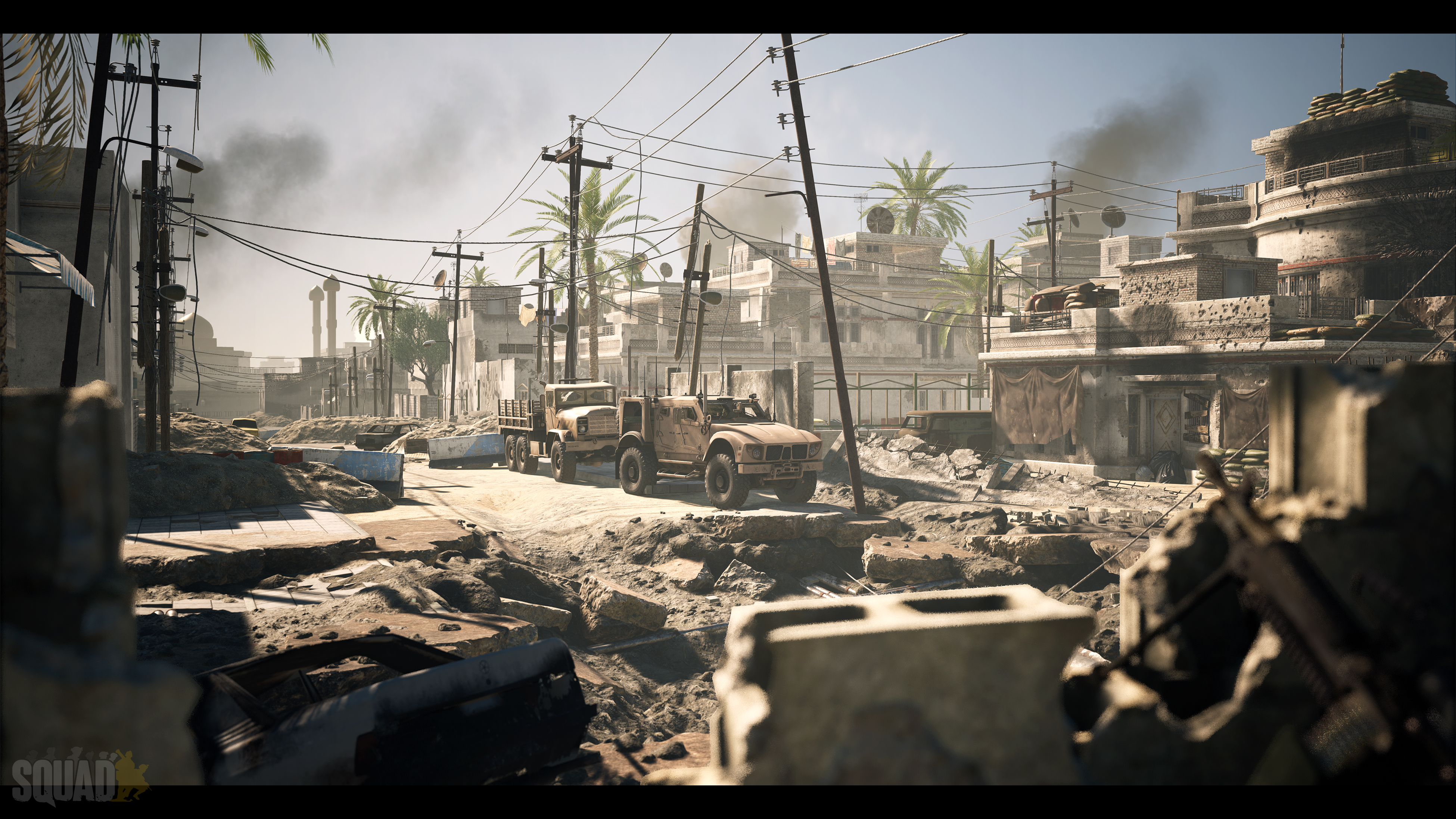
Offworld Out.
Join the Discussion >>

DevBlog
The Road to Fallujah, Part 1
30-Oct-2017

Hi Squaddies,
During our Kickstarter campaign we held a vote to see which map from Project Reality you, the community, wanted us to remake for SQUAD. Fallujah clearly won that vote and was put on the roadmap. At that time, we were still learning a lot about the engine and how to efficiently tackle level construction in Unreal 4.
We started with barren desert maps like Kohat, then started adding more complexity seen in maps like Chora and Sumari. From there, we explored the Eastern European setting with large forests on maps like Fools Road, Gorodok, and Yehorivika.
Next, we pushed on to an urban setting on Narva, all the while knowing that Fallujah was one of the key maps that we were working towards. Upon the release of Narva, we began pre-production on Fallujah. At this stage we knew we wanted to take some extra time to brainstorm how we approach gameplay and visuals, because of this we decided to revisit our workflow and we really think it has paid off.

Getting Organized
The first thing we did was spend about a week reference digging. We wanted to gather tons of inspiration and sources to help us capture the essence of Fallujah.
In order to stay organized and to produce things in phases we broke the city up into four key recognizable districts: Outskirts, Industrial, Urban Residential and Urban Center, each contributing to the map in a unique way both in visuals and gameplay. Defining these districts allowed us to plan out the flow of the map and also breakdown the production of the assets into manageable phases.


The Districts
Outskirts
The Outskirts consists of slight hills, sporadic homes in-construction, and other medium sized buildings creating well spaced areas for mechanized infantry to establish an approach into the city.

Industrial
This district is made up of large warehouses, office buildings and large in-construction buildings. Similar to the Outskirts, these areas will spaced out and provide prime locations for FOBs while offering vehicles cover, allowing them to push into parts of the city.

Urban Residential
Consisting mainly of homes, this district provides medium density with plenty of areas for infantry to take cover in. Taking vehicles into the Urban Residential areas will be a risky endeavor.

Urban Center
The Urban Center district is the heart of the city. Large roads, overpasses, big commercial buildings and high density will ensure intense combat.

With the map broken down into key districts we were then able to start visualizing some potential map layouts. The original Fallujah West from Project Reality (PR) was examined and, in the end, we decided to use it as a starting point for the map.
The goal is to give a homage to the original map in the lower left while expanding upon it and making it our own. The PR map was based off of a real world layout, but breaking free from this gives us much more freedom in level design allowing us to prioritize gameplay over exact authenticity.


The First District
After getting organized we began producing the first district, Urban Residential. We chose to start on this district because we knew we wanted to revisit the way we produced buildings as they make up a large chunk of our map and wanted to address this first. We also knew the Urban Center district would be the most complicated and intricate set of buildings we would have to make so we decided to save those for last and start with Urban Residential.
In order to maximize the gameplay experience of our buildings we made rough blockouts of our buildings based on references. After we blocked out 15-20 buildings we threw together a test map and playtested them. During this stage we weren't concerned about textures or materials, we focused on spacing and variety of gameplay for this district.

After a few adjustments we were happy with the blockouts. The team then took them through phases to get the buildings to a final state while creating other assets for the district. The end goal was to make a "vertical slice," a section of the district that represents the target visual style and quality for the rest of those areas of the map.



Burnt Car Material
Vehicle wrecks are an asset which add a lot of character and drama to a scene - and we wanted to do them justice. However, creating vehicles is always time consuming and can be costly in terms of memory footprint. With this in mind, we decided to reuse our existing vehicle models and repurpose an existing shader to "wreck" them.
Using this smart material, we can procedurally blend between various states of damage, such as burnt paint and ash. The technique also allows the artist to edit each vehicle in real-time without the need for time consuming asset reauthoring. Both the method and texture set is not unique to any single asset and so can be reused many times - making it inexpensive, versatile and time efficient.


Vertical Slice
Once the buildings were in a good spot we then arranged them into a scene and started adding other assets. Wall sets, rubble, destruction, building props, terrain materials and a host of other items were worked on to bring the scene together. Taking the time for R&D and to rehash our pipeline has really paid off and has set us up to move through the other districts at a good pace.
The level of detail in our vertical slice is our ambitious goal for key objectives of the map but for performance reasons may not get fully realized, but as they say, "Shoot for the moon, even if you miss you'll land among the stars."



Offworld Out.
Join the Discussion >>
Soldato
- Joined
- 25 Nov 2011
- Posts
- 20,680
- Location
- The KOP
Amazing!!! WOW! This for me is everything I want from Squad!
Any groups here who wouldn't mind a noob tagging along?
Constantly looking at this but none of my friends are interested in trying it.
The best thing you can do is to jump in a server, join a squad (preferably one called "English Mic" or similar) and tell the SL you are new. As long as you use your mic and follow the SLs orders you'll be golden. Oh and don't pick marksman class


Recap
October 2017
01-Nov-2017
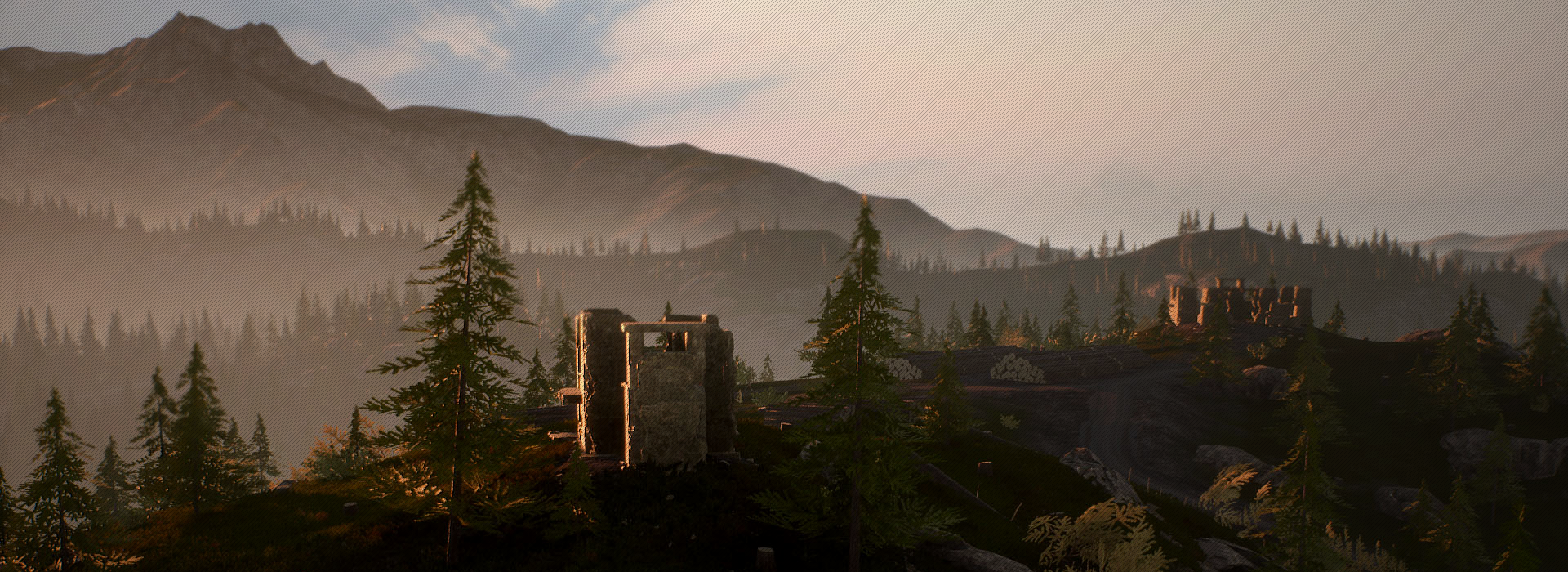
Hi Squaddies,
We're bringing you another recap, fresh off the presses. This recap contains some of the most recent efforts each of the teams have put into Squad to show off their work, and what's coming down the road for Squad. The development team remains hard at work, so be sure to check back to see how everything is progressing, especially that new map!

Systems

Animation System Progress
Since the last devblog on the animation system, we've continued to make progress at a steady rate, replicating features like Bipods and Freelook over the network. There have been some engineering challenges as we look at how to deal with bipods over the network and the way the player interacts with the surrounding obstacles as you swivel around. Regardless, progress is being made day by day, and we'll keep you updated as major developments here happen.
Weapon Collision

One system we managed to serendipitously add was a collision detection system to weapons. When you are up against a wall or obstacle, depending on the length of your weapon, it will lower out of the way and prevent you from firing and aiming down the sights. This will add another layer to weapon balance, especially when dealing with close quarter battle situations where bringing a shorter weapon would allow you to be more manoeuvrable. Pistols especially benefit from this as they practically require you to be right up against the wall before you're too close.
Main Menu UI

Our UI designers have begun step one of our plan to greatly improve the UI and menus both in and out of the game, beginning with the Main Menu. We're aiming to not only make it more aesthetically pleasing, but also build in additional functionality like access to Modding (More info about this to come!). The background scene currently is a work-in-progress, but our artists are cooking up something special to go in there.

Art

M240B
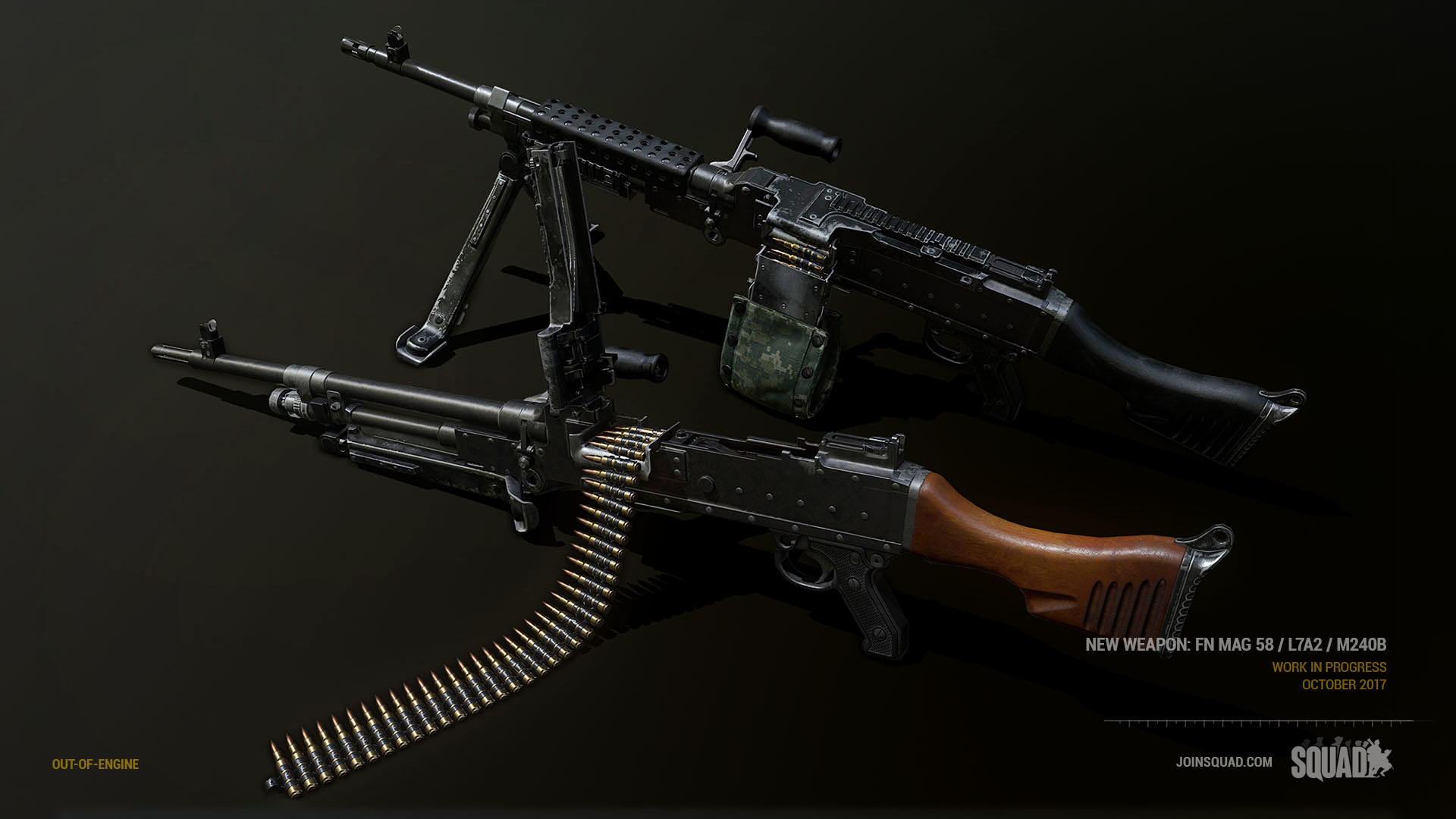
Featured previously in a monthly recap, the M240B (and to a larger extent the FN Mag 58 series of machine guns) has been styled and configured to the new animation system, ready to rock and roll come next major version.
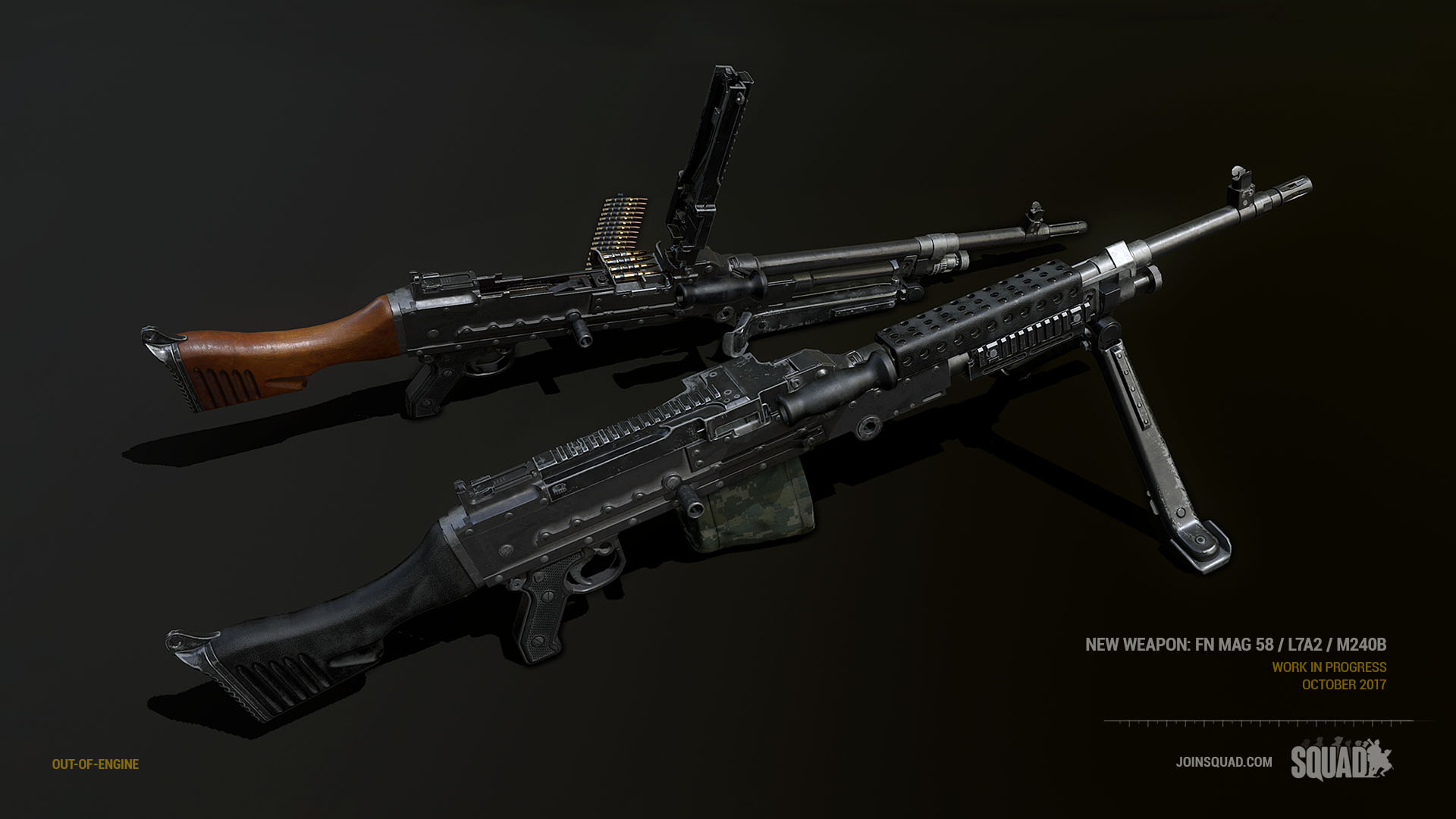
RPG26 Aglen Rocket Launcher
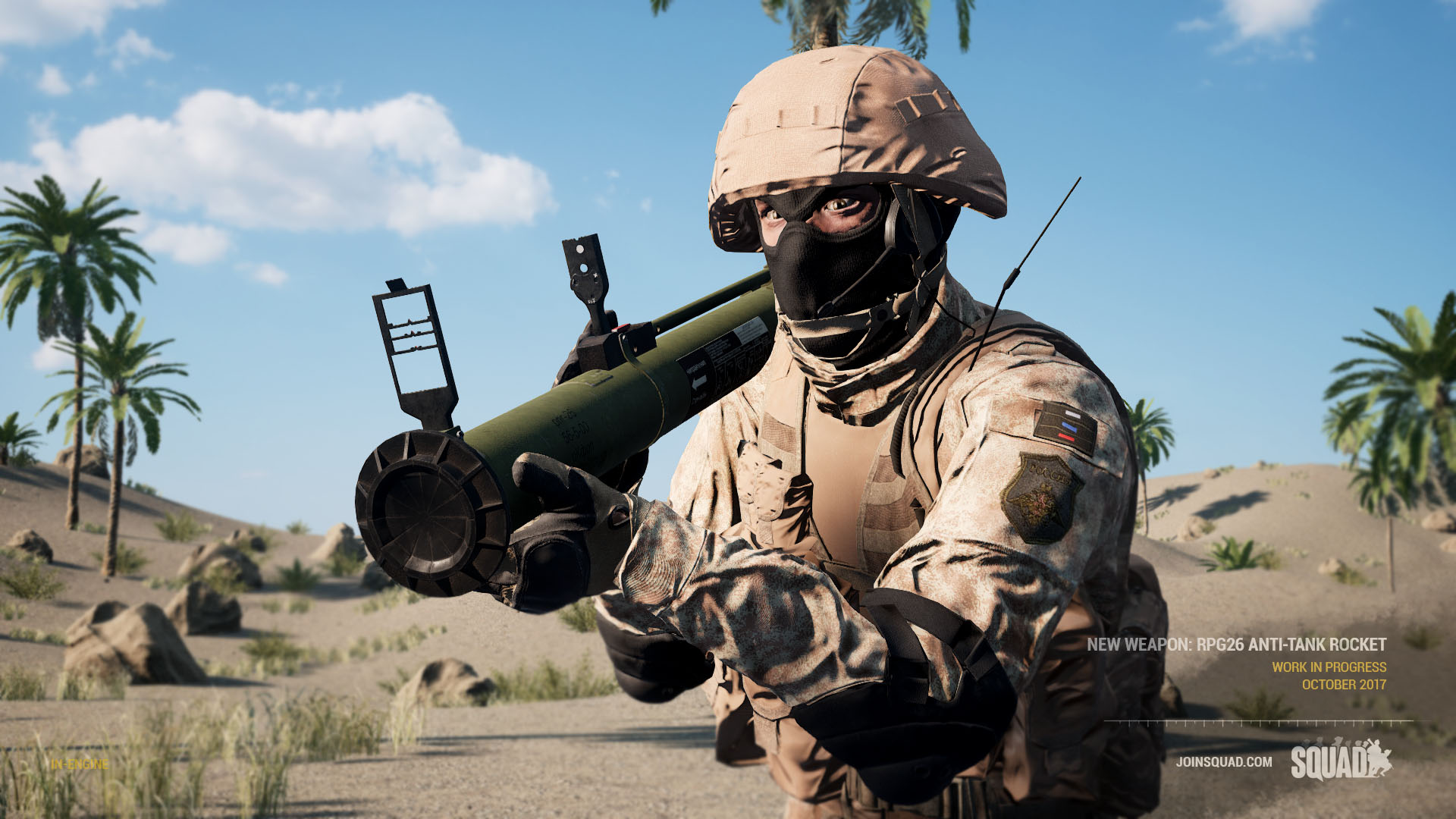
Developed in the 80s as a disposable rocket launcher counterpart to the M72, the RPG26 boasts a larger warhead than its American counterpart, and overall much lighter package compared to the traditional RPG7. When this weapon debuts you will take advantage of the adjustable sights system in order to make your shots count.
TT33 & M17 MHS
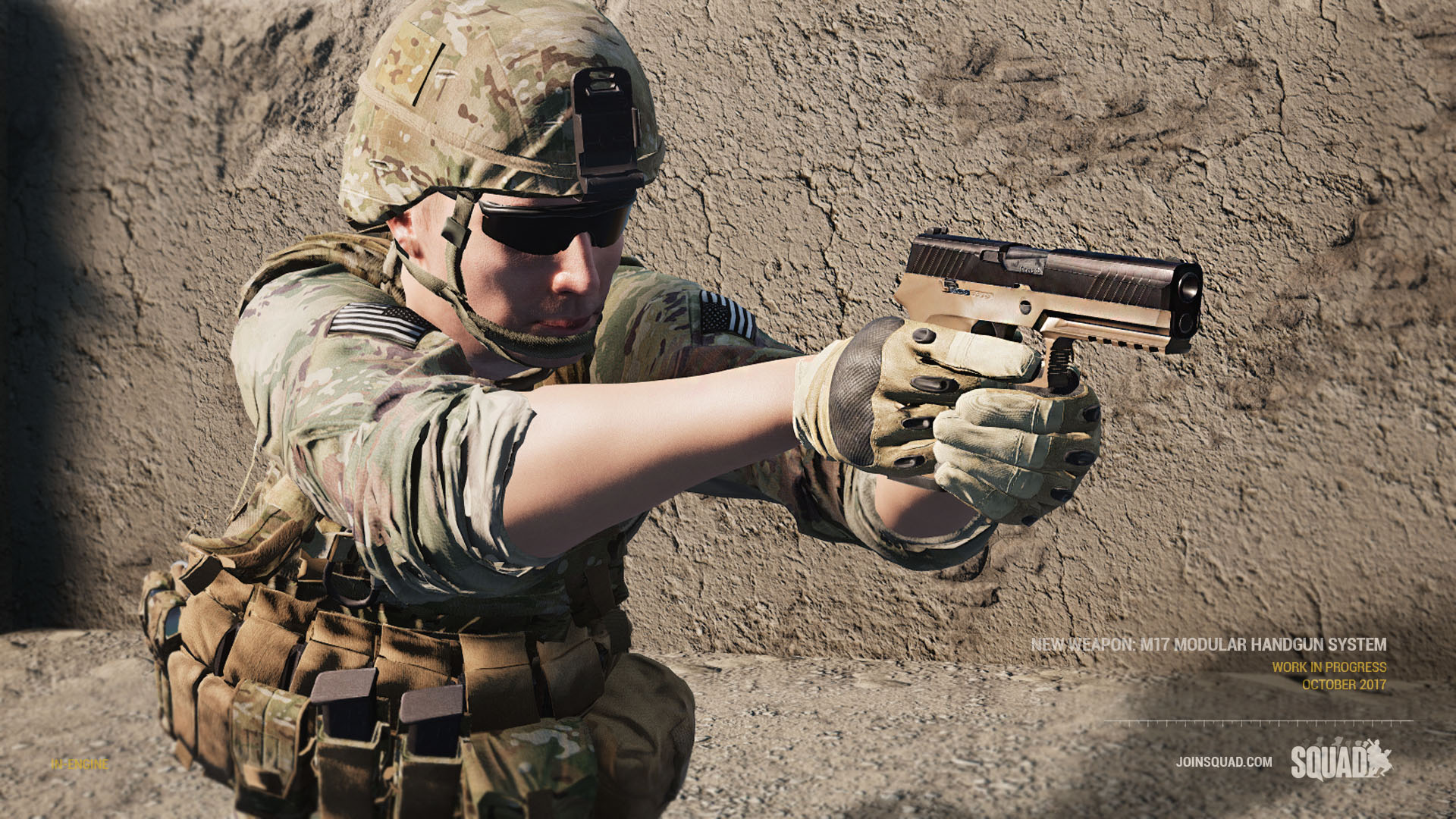
A few new pistols will also make their debut in the next major version, with the Sig P320 (recently adopted as the M17 Modular Handgun System by the US Army); and the Soviet Era TT33 Tokarev for the Militia/Insurgents. Both have their own distinguishing characteristics in terms of firepower and magazine capacity.
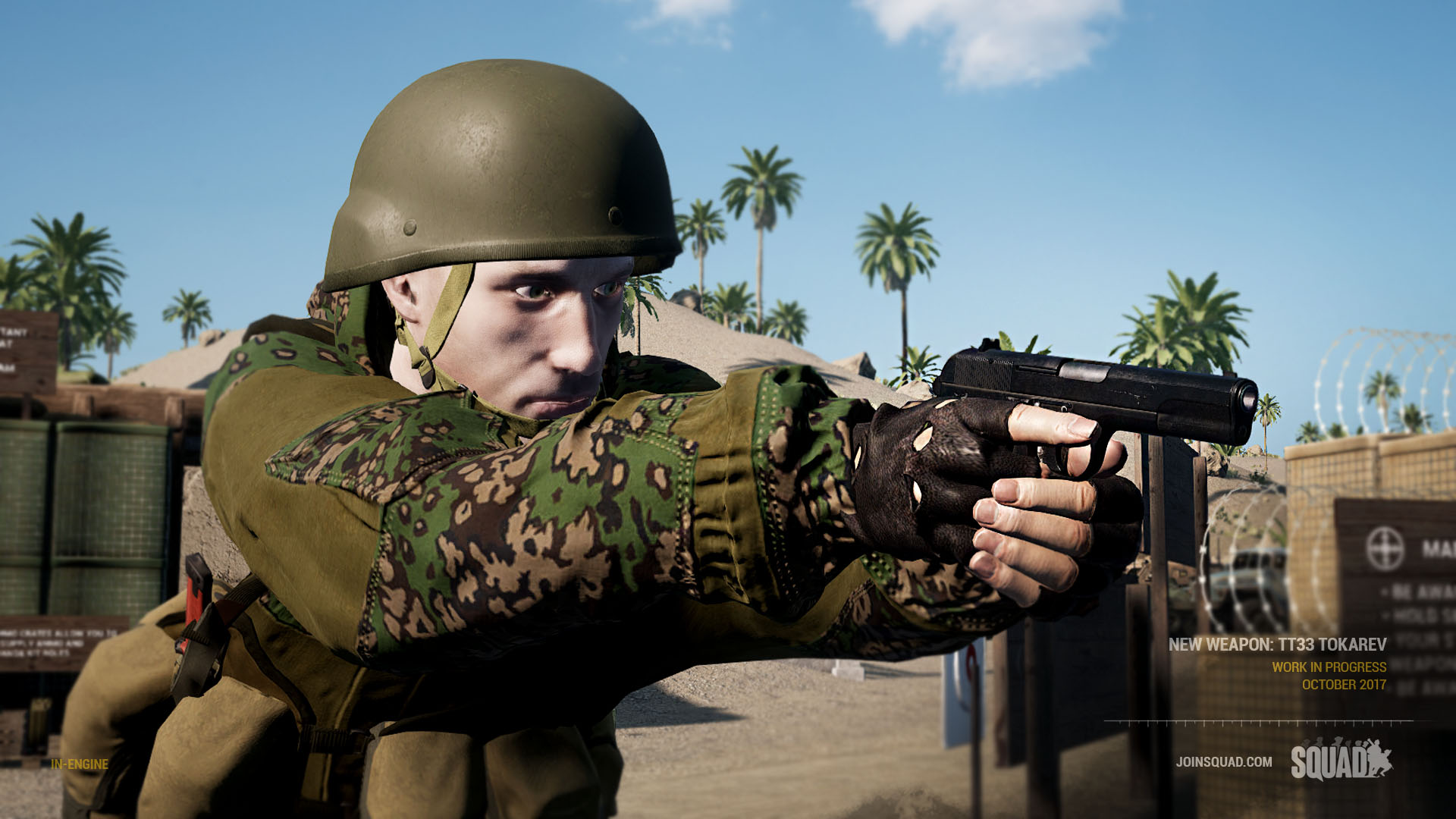

Mapping

Mestia
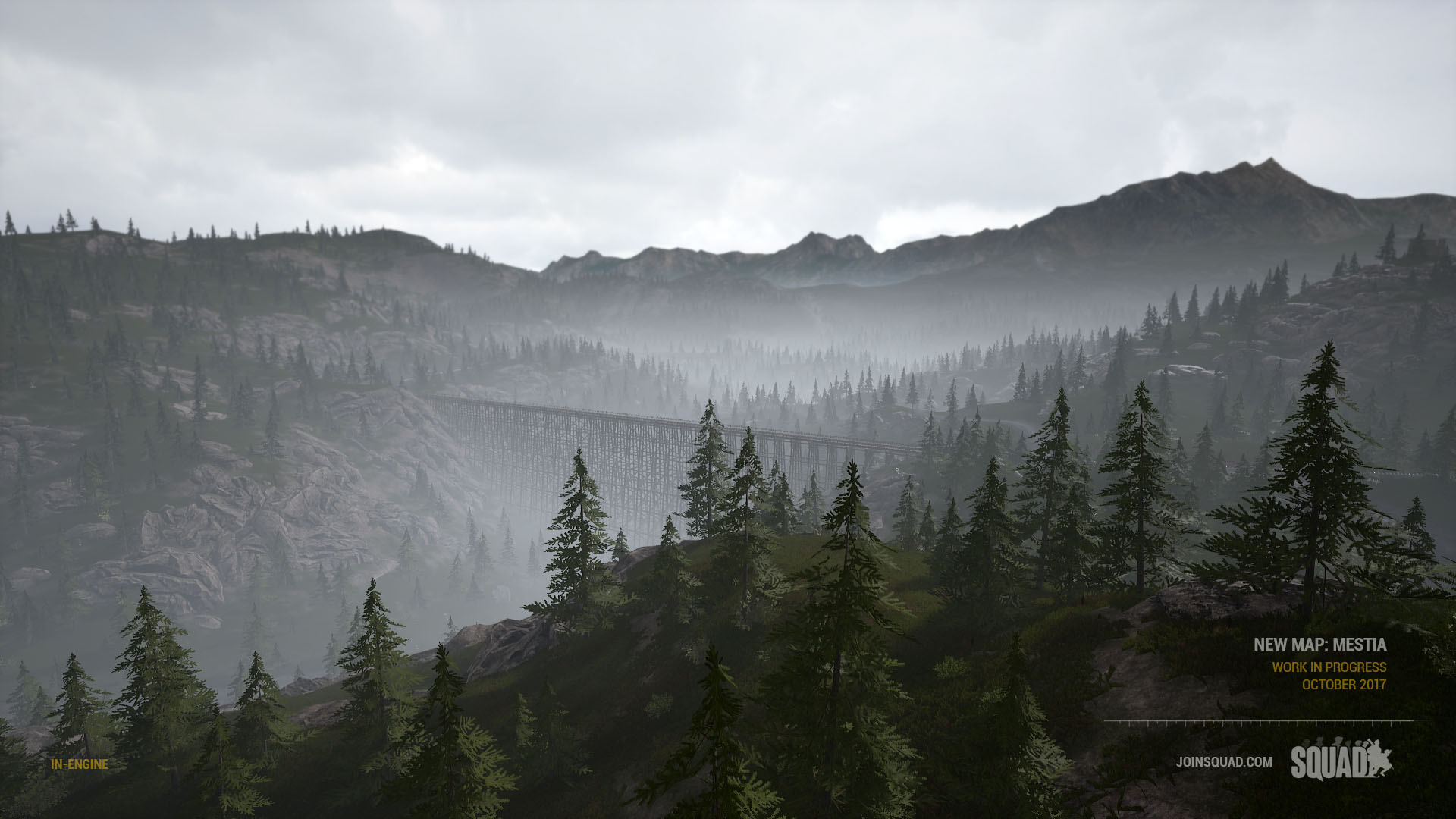
Borrowing heavily from our experience with Fool's Road, this reimagining of a classic Project Reality map pushes the envelope on vertical combat. Focused around a triangle of mountainous fighting positions the map includes rocky faces and winding mountain passes that are sure to be a recurrent graveyard for unwary vehicles.
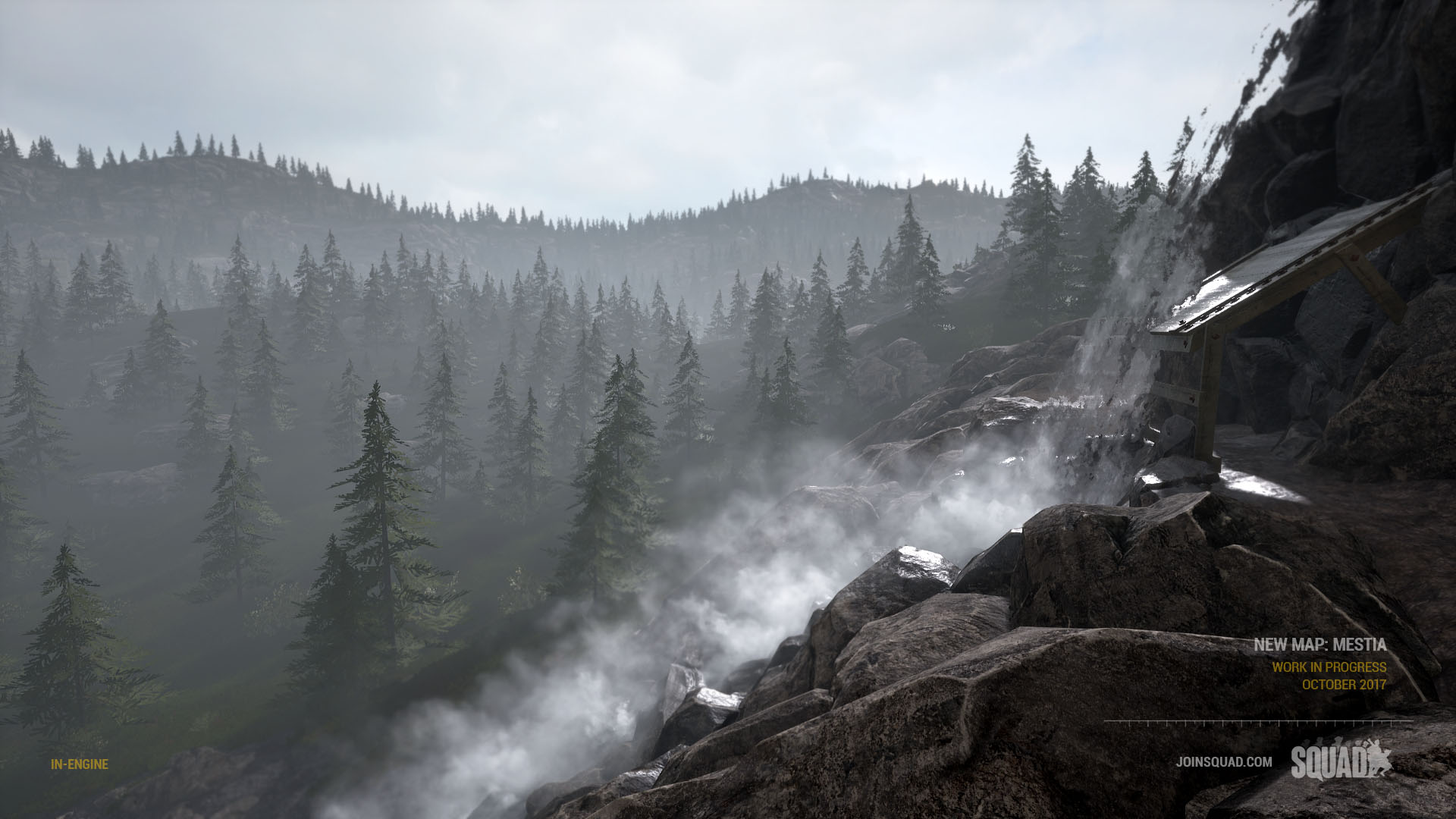
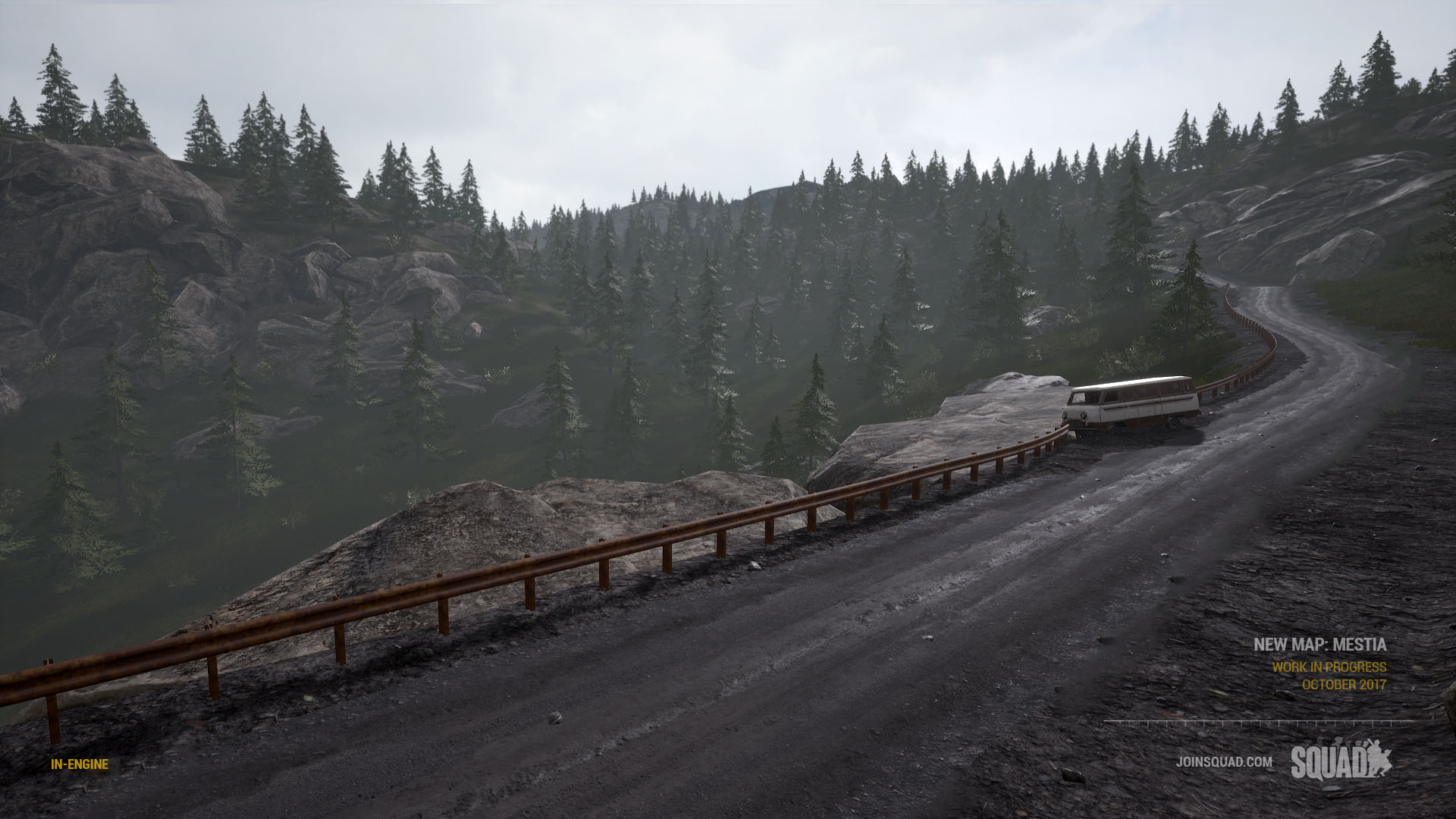
An infantryman's dream, we are aiming to tuck a good amount of nooks and unique engagement locations throughout the map. Mestia was begun by our recent modder turned developer Axton and polished up by the development team. We expect the map to be completed and ready to roll before Christmas!
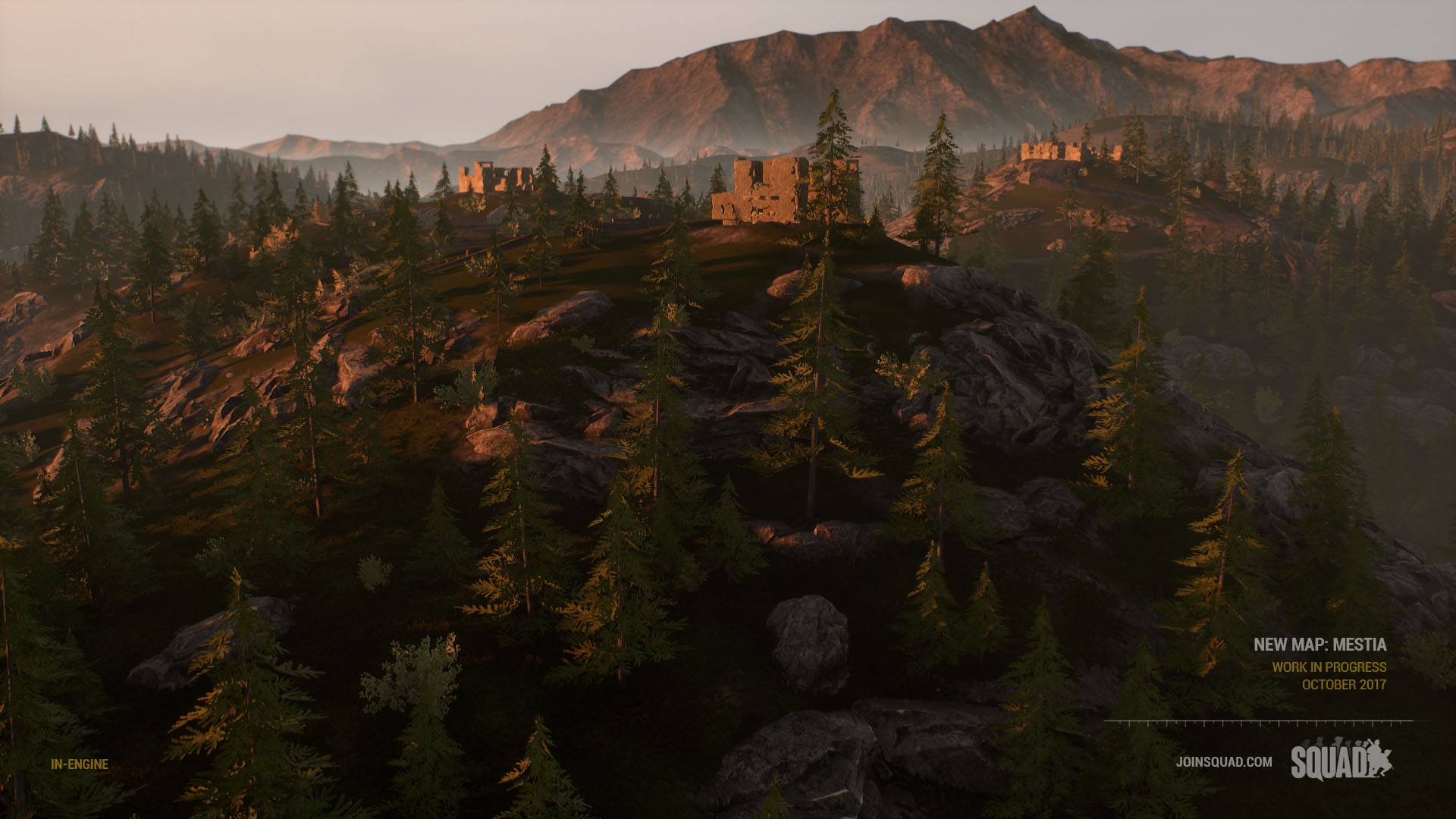
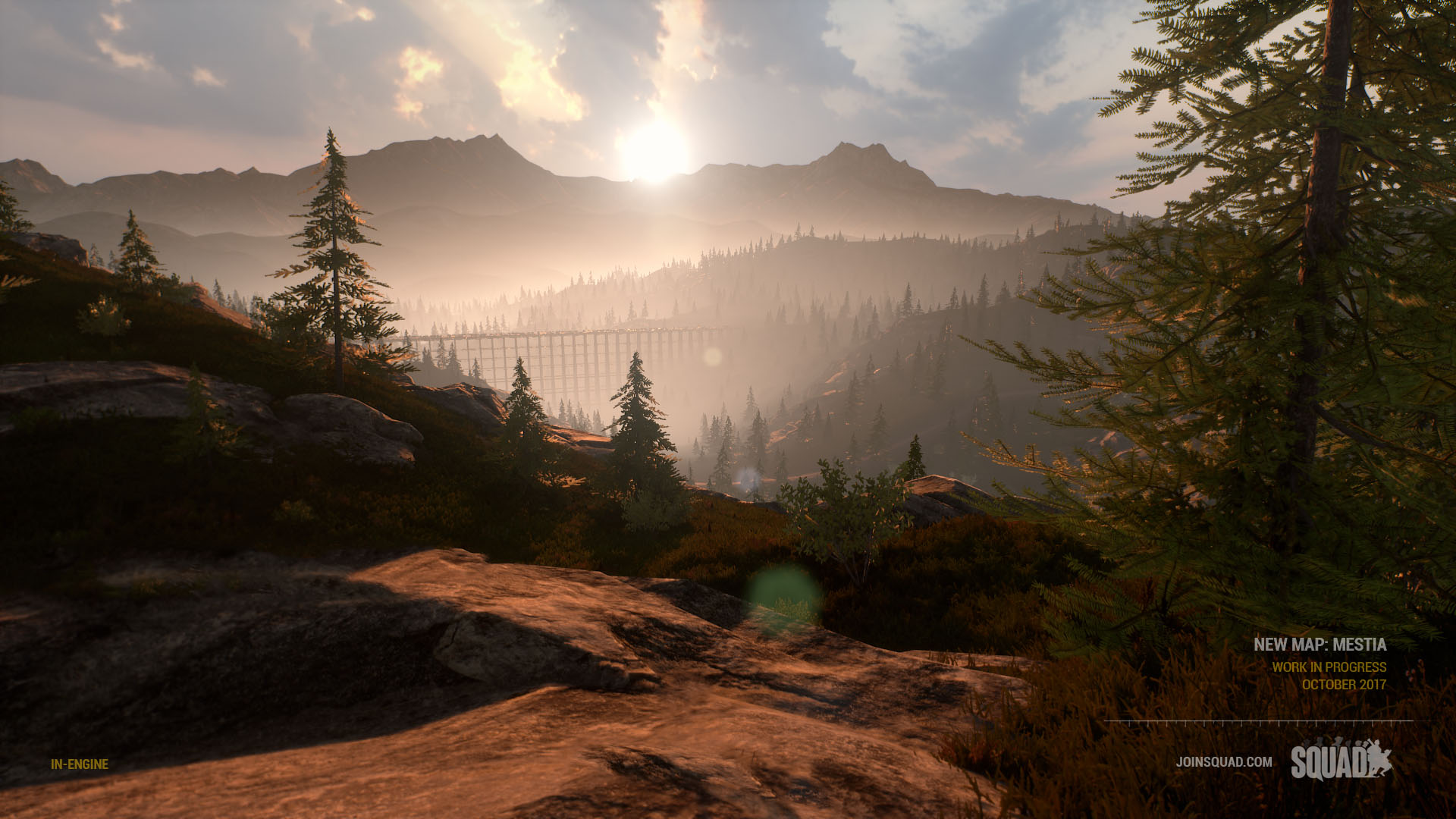
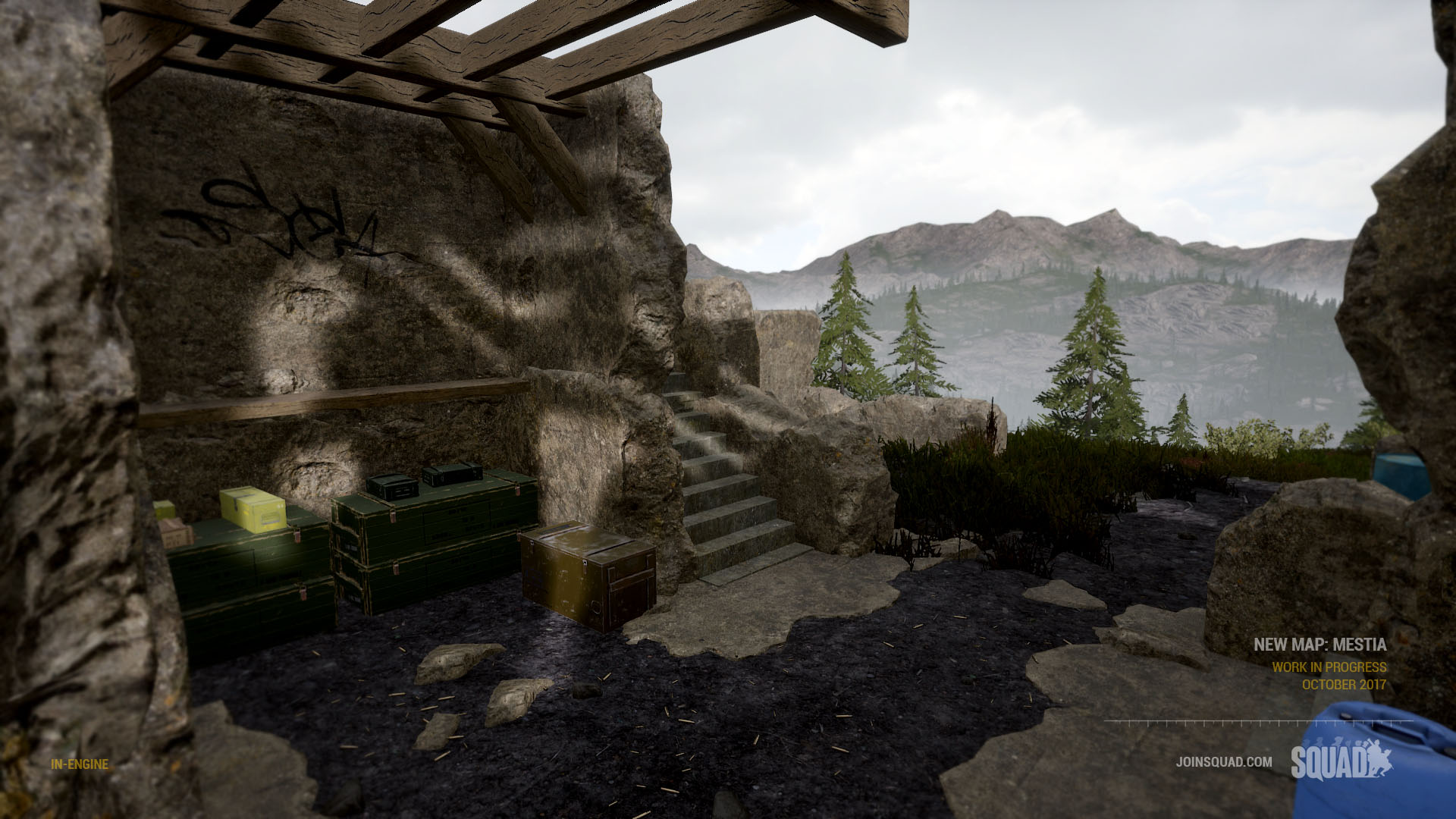
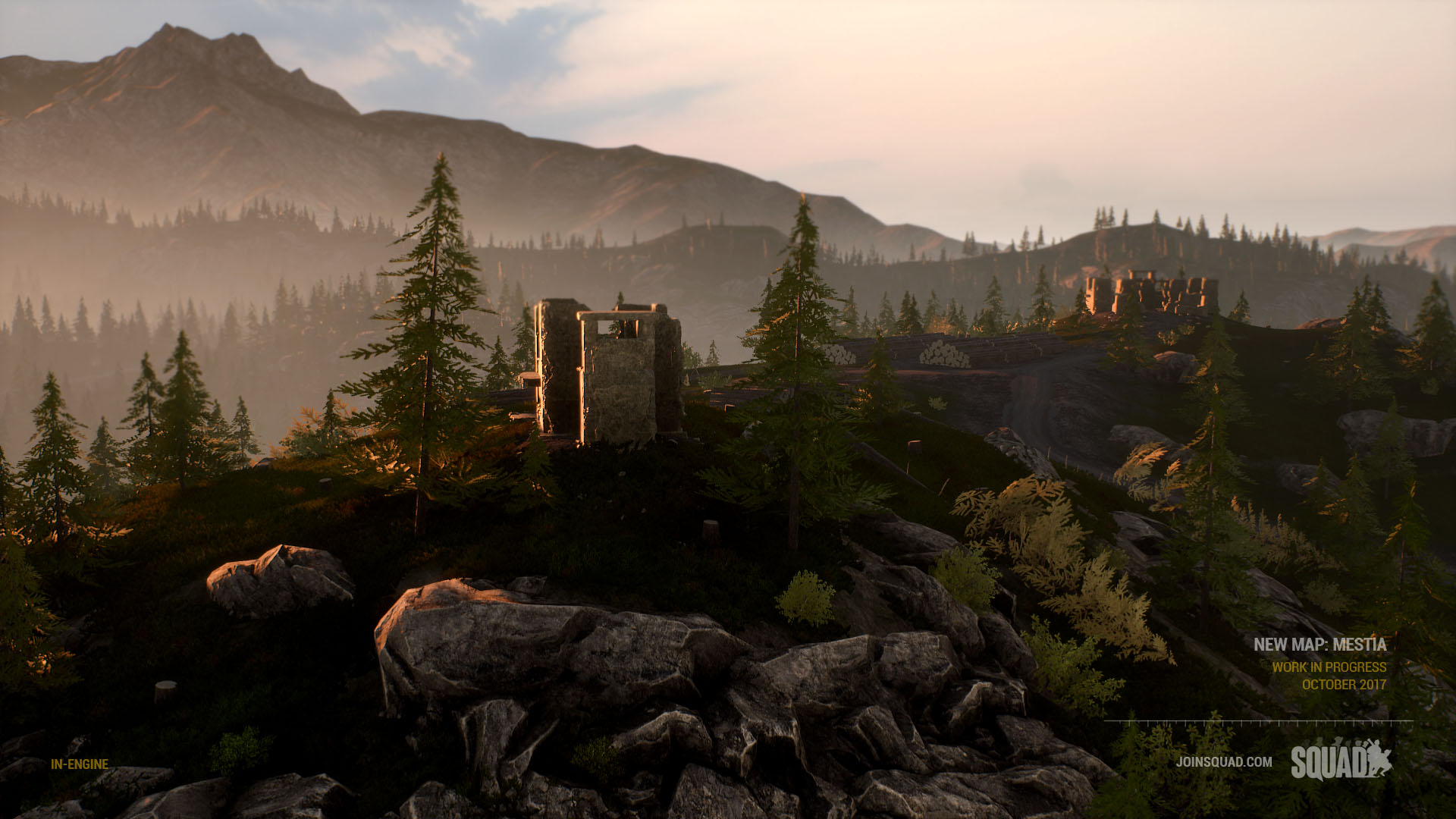
Sign-off

Among primary development on version 10 and other departments making ground for future content, we have plenty still left in the barrel. Expect continued updates on this in more dev blogs and monthly recaps to come! Stay safe, squaddies.

Offworld Out.
Join the Discussion >>

Event
Stack-Up for Veterans Day 2017
07-Nov-2017
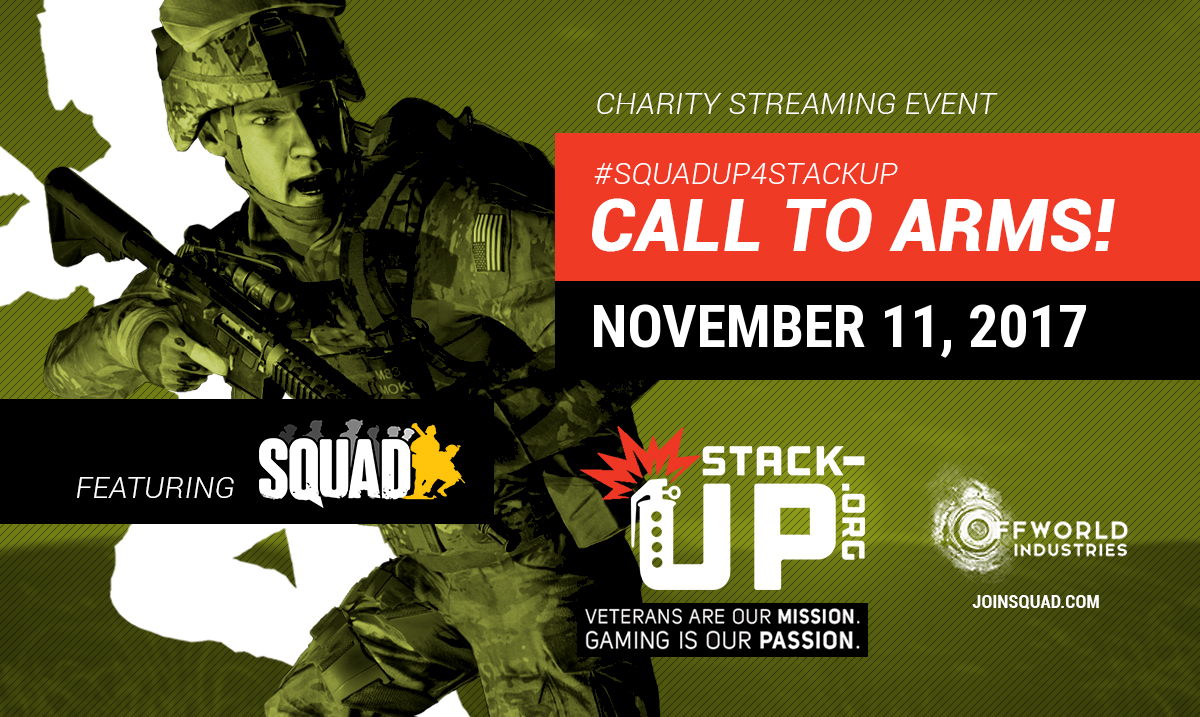
Stack-Up!
Veterans are at the very heart of Squad: they're at the heart of both the team and the community. We simply wouldn't have Squad without our veterans. With that in mind, we're looking forward to another Veterans Day celebration in conjunction with Stack-Up.org.
On Saturday, November 11th, 2017, we'll be showing off some of the best Squad has to offer and what's changed since last year. You'll be able to get a glimpse of some of the hottest competition in Squad, chat with Offworld developers, and maybe even snag some prizes. Best of all, Stack-Up is a charity that's by gamers, for gamers. Ain't nothin' wrong with that! So join us on November 11 for the Stack-Up for Veterans Day. We're honored to be part of the action!
We'll be kicking things off at 10:00 AM PST and running until about 8:00 PM PST.
Here are some of the highlights:
- Community Clan Fight Night (CCFN) shows us what competitive Squad is all about.
- The ISKT all-stars have challenged OWI developers to field a squad -- Challenge accepted!
- Squad Ops: Cinematic scenarios, intense firefights, and one life to live. Who could ask for more?
- Squad developers answering YOUR questions.
- Giveaways! We've got some hardware and some softer wares to share!
The Offworld Industries team will be pledging $10,000 USD to Stack-Up and we are aiming to match that in donations over the course of our charity campaign. You can, of course, also make a small donation via Squad merch. ($5 of every item purchased goes to support Stack-Up.) Be sure to order before December 15th to get your order in time for the holidays.

Squad Up!
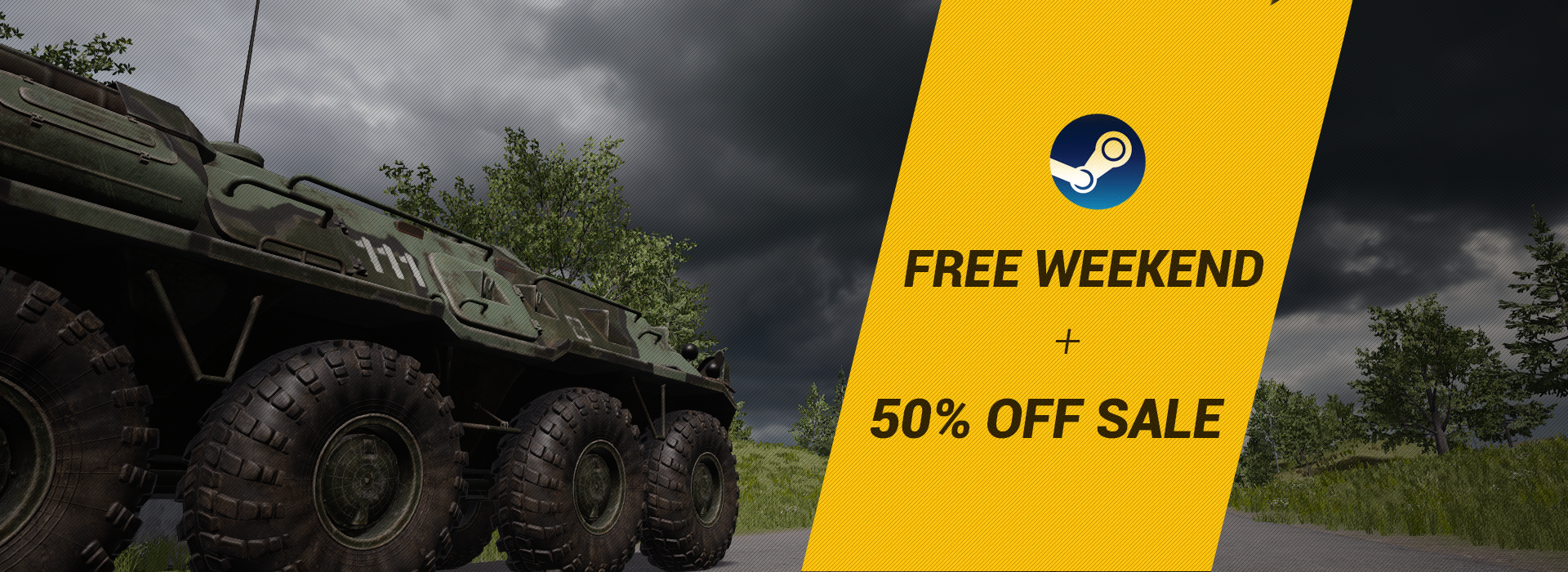
In conjunction with the November 11th Stack-Up event, Squad will be running a Steam free weekend and 50% off sale from Thursday November 9th at 10 AM PST to Sunday November 13th at 1PM PST. This will be a great chance to finally pile all your friends into a BTR (or a BTR) of your choice and hit the battlefield. We are extremely excited for everyone to get a taste of all the improvements since last year!
Along with the free weekend, we're working with our hosting partners Bluefang, Fragnet, HostHavoc, Gamerzhost, PingPerfect, and Vilayer to ensure we are ready to rock for the influx of new squadmates.
Please help us in welcoming them and helping everyone get their boots on the ground.







Call to Arms
The Squad community is filled with veterans of all generations and we are very fortunate to have the opportunity to play our game with them on a regular basis. They've become the backbone of many of the best communities and clans and we greatly appreciate their passion for Squad. We have four of our own who have served in various roles for their respective militaries and it is the least we can do to show our commitment to them as developers and partners.
Our hope is that by becoming a fundamental pillar of Stack-up, Squad and its community can start to effect change on a larger scale and encourage others to do the same. Together we succeed!
On November 11th, we hope to see you at the charity drive to support Stack-Up and honor all those that dedicate their life to service.
Offworld Out.
Join the Discussion >>
Patch dropped late last nightMestia added, is this true?

Alpha 9.13
Hey Squaddies,
Just a little drop for you before the free weekend. Enjoy!
- Added Mestia with two AAS layers, two Invasion layers and one PAAS layer.
- Fixed Chora map border
- Added Yehorivka Invasion v2. This layer is experimental. The Militia main base is the last flag and can only be attacked once all connecting flags are captured. At that moment, the main base protection zone disappears and the main base spawn timer for Militia increases to two minutes. Most of the vehicles have a delayed spawn so that heavier weapons become available later.


